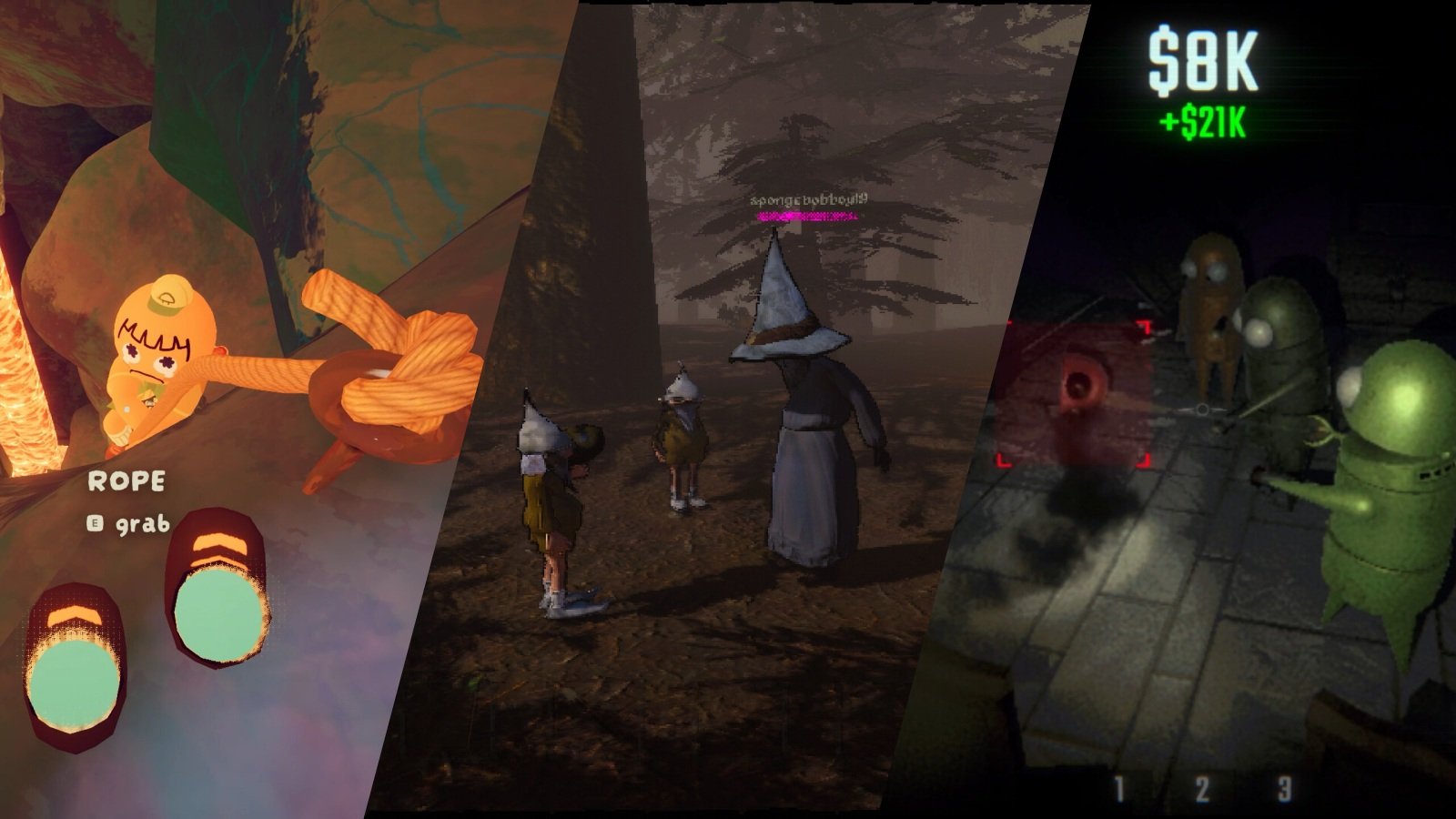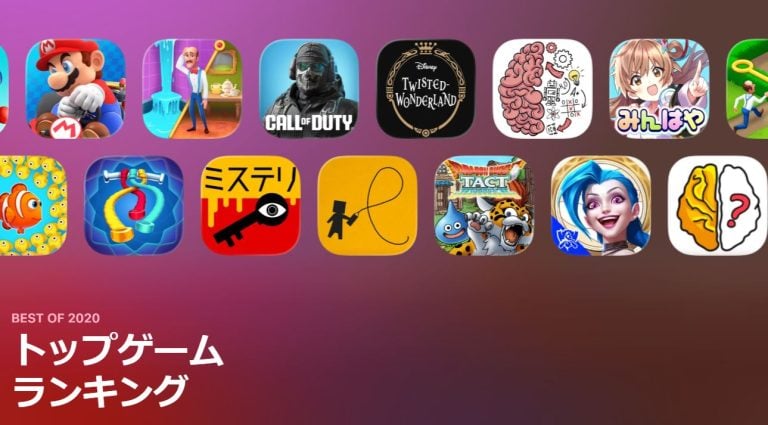Game industry research agency GameDiscoverCo, which specializes in insights about discoverability, released a new report on October 18 analyzing how Steam Wishlists translate into actual sales. The data suggests there are some common traits among games that are more likely to be purchased after being Wishlisted.
Although Wishlists, according to Valve, do not directly affect how much visibility a title gets on Steam algorithm-wise (with a few exceptions like the store’s “Popular Upcoming” tab), they are still an important factor of performance, especially since users receive direct notifications whenever their Wishlisted games get released or go on sale.
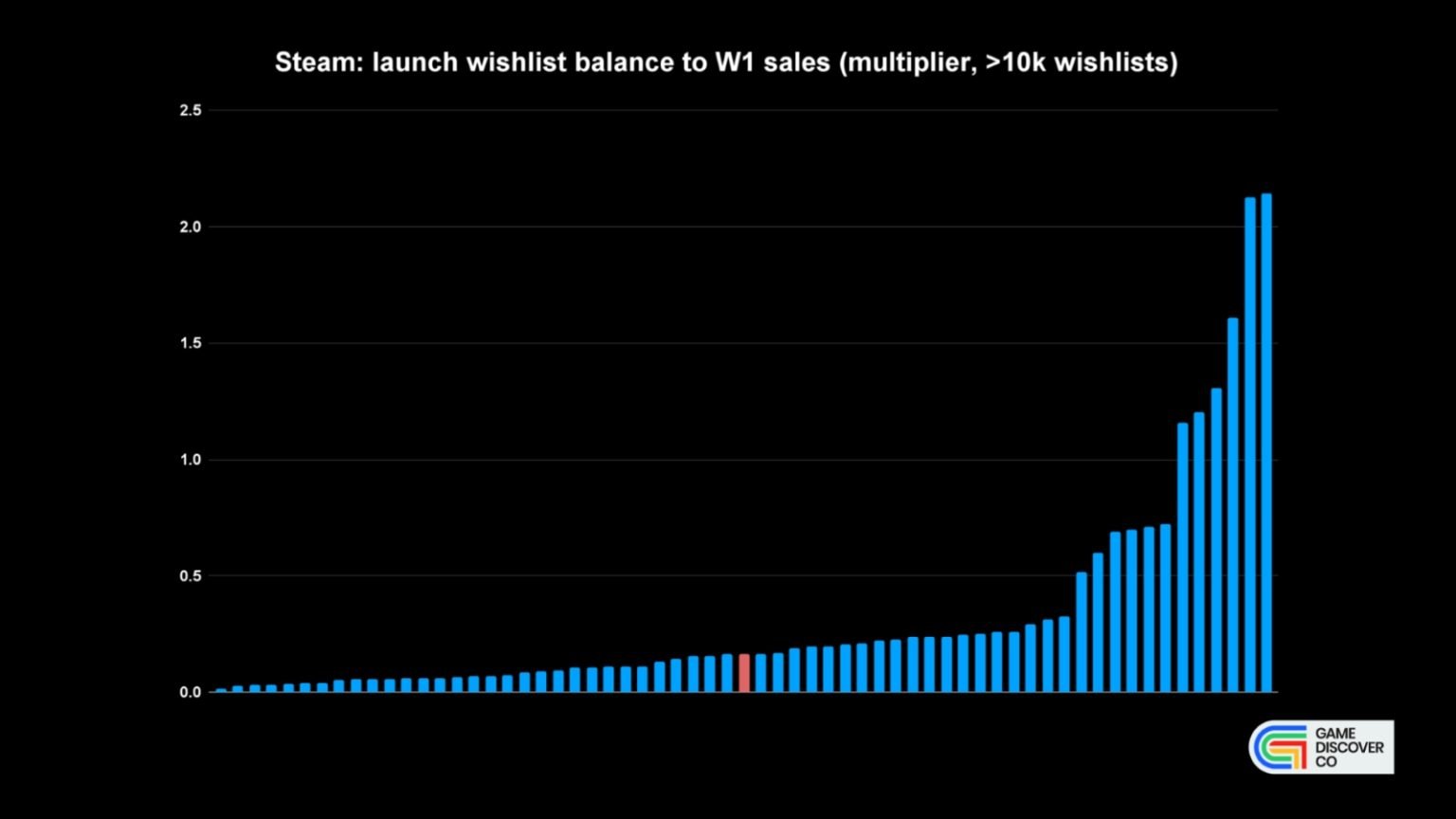
Back in April last year, GameDiscoverCo conducted a survey among game publishers and developers to measure the conversion rate (Wishlist-to-actual sales ratio) of games with over 10,000 Wishlists. The median conversion rate was 0.17, and the accompanying data showed that very few titles managed to outsell its Wishlists by a significant margin.
In their latest report, GameDiscoverCo editor Simon Carless reanalyzed that data, focusing on how factors such as release timing, genre, and post-launch performance affect Wishlist conversion rates. The new study focused on games with at least 25,000 Wishlists, covering all Steam titles released over the past two years.
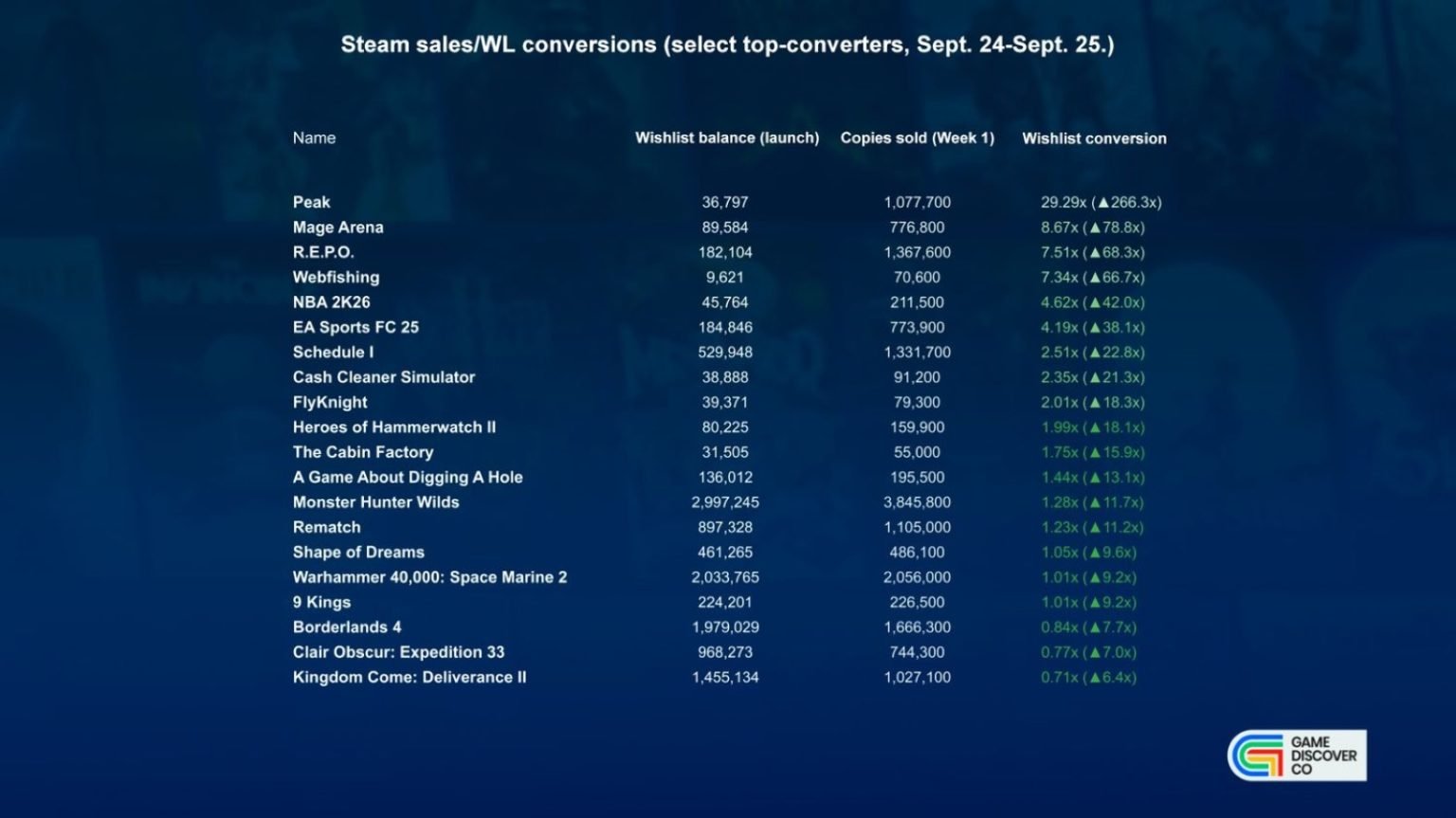
Carless tallied first-week sales data from September 2024 to September 2025 and compiled a list of the top 20 titles with the highest conversion rates. Among them were games like the co-op mountain-climbing hit PEAK, the voice-controlled spellcasting battler Mage Arena, and the horror title R.E.P.O. These games all went extremely viral among players and content creators, and Carless noted that titles in the online co-op genre tend to show particularly strong conversion rates.
Some of the top-ranked games, on the other hand, were titles whose target audiences are comparatively “casual” and thus aren’t likely to Wishlist in the first place (they just “show up” to play). For example, major sports franchises like NBA 2K26 and EA Sports FC 25 had relatively few Wishlists compared to their massive sales, resulting in unusually high conversion rates. Conversely, there were apparently also many “success stories” that achieved strong sales despite not making the top 20, with some games managing to convert one to three times their Wishlist count into sales.
Looking at the bottom 20 games (with the lowest Wishlist-to-sales conversion rates), Carless found that poor user reviews were a major contributing factor. The top 20 titles had an average first-week Steam user review score of 91%, while the bottom 20 averaged at just 67%.
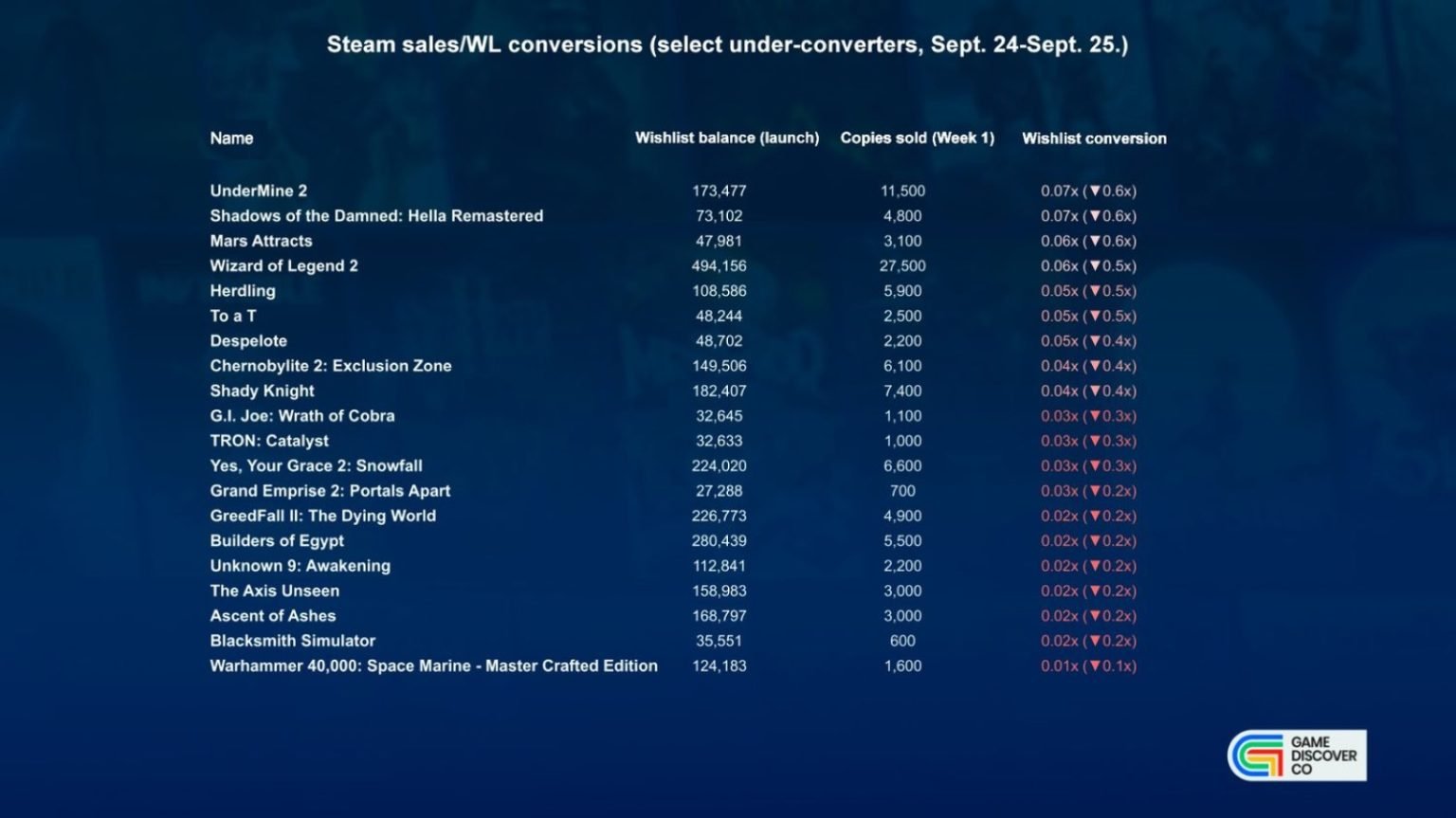
Another difference was the amount of time the games spent on their store pages before releasing. The top 20 were listed for an average of 214 days, while the bottom 20 were listed for 411 days. Although titles with longer lead times can technically accumulate more Wishlists, but that doesn’t necessarily mean user interest will keep building over time.
Carless also pointed out that sequels tend to have lower conversion rates. This may be due not only to high player expectations, but also because the release of a sequel often coincides with heavy discounts on previous entries. Meanwhile, highly unique, “boutique indie” titles can also tend to underperform in conversions. People may think they look interesting enough to Wishlist, but not necessarily to purchase.
Interestingly, the new analysis found a median conversion rate of 0.15, which was higher than GameDiscoverCo had expected. In examining which types of games were raising the average, Carless found a notable pattern: NSFW (adult) games were disproportionately represented among high-conversion titles. This makes sense given that Steam users who buy adult games are likely to fall under the “hardcore” demographic that has much higher conversion rates. Given how niche they are, adult titles stand out as a kind of statistical outlier.
On a more general note, the report also addresses concerns about whether median Wishlist-to-rales ratios have decreased overall in recent years. According to data from 2022 to 2025, this does not seem to be the case. However, with the number of games released on Steam growing higher and higher, it is simply much harder to compete with others for Wishlists.

